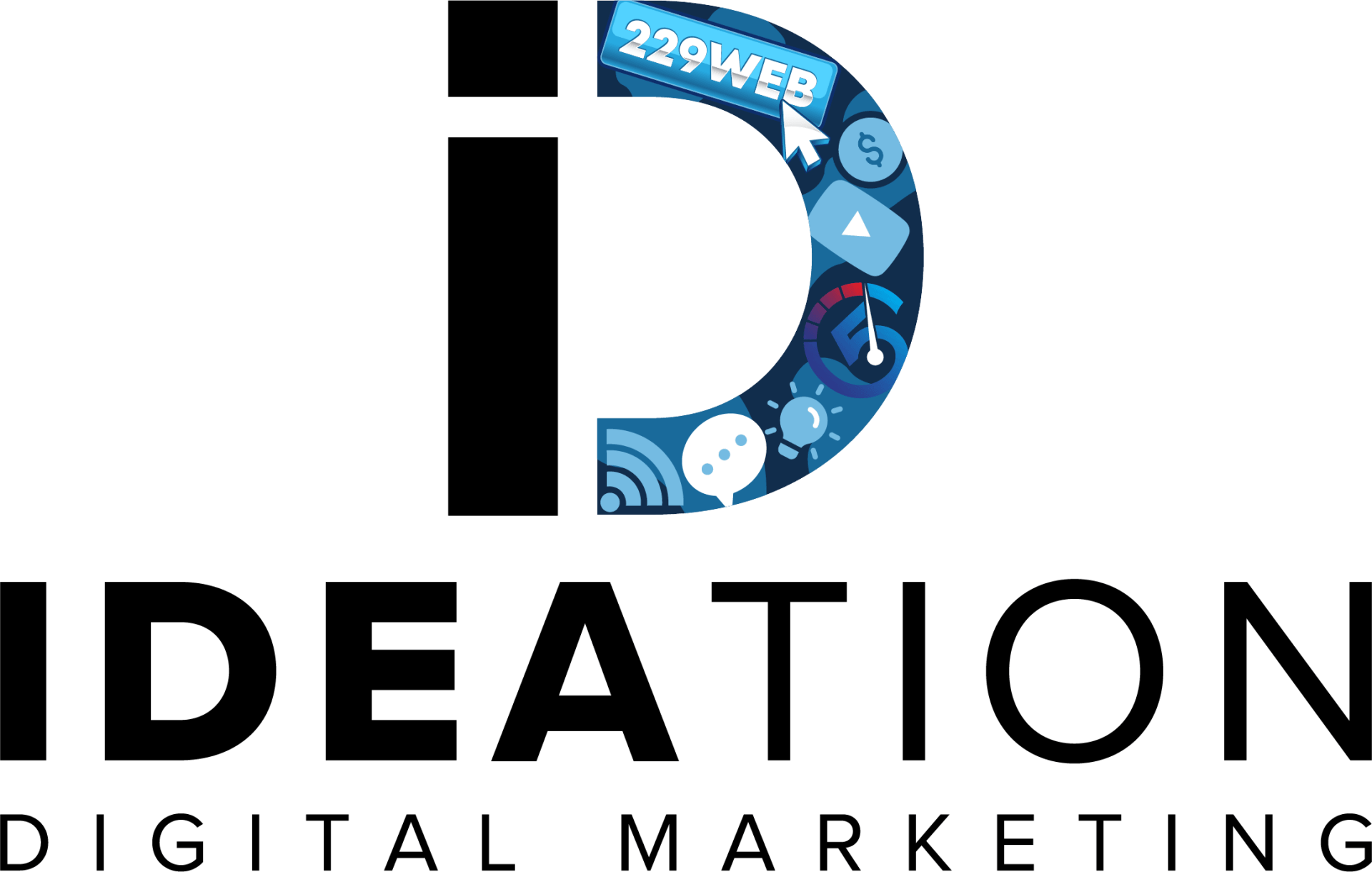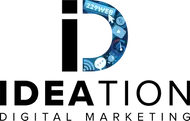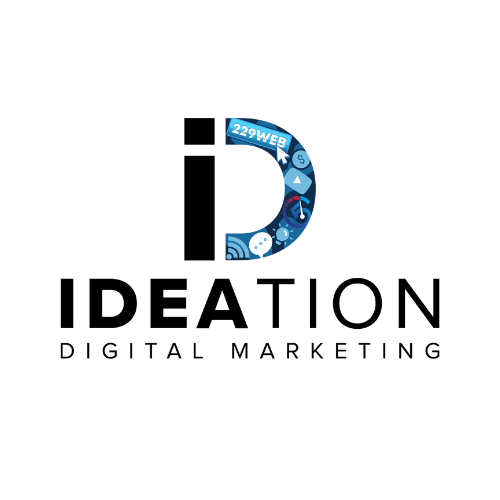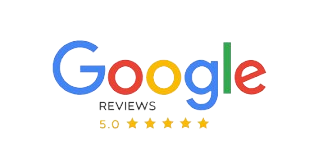CHAPTER 2 LAW FIRM MARKETING STRATEGIES: CREATING A PATH FOR SUCCESS
THE FIRST PART TO CREATING SUCCESSFUL LAW FIRM MARKETING STRATEGIES IS TO DEFINE, WELL, THE PARTS THAT NEED TO BE EXECUTED.
Haphazard campaigns get haphazard results. Average efforts get poor results. We are going to create a path so clear for your customers that even Dorothy couldn’t get lost on it. This is literally the most important part of your marketing plan, and therefore your success, so don’t make the mistake of taking this lightly just because it seems simple and in some cases even obvious.
To get the most out of any digital marketing campaign we need to create a clear path for prospects to move from just becoming aware of you to becoming the kind of advocates that literally promote your brand freely and fight for you and your good name.
THE FIRST STEP IN CREATING YOUR LAW FIRM MARKETING STRATEGY: CREATE AWARENESS
Just like the first step on a hike or a run, the first step in your customer’s journey needs to be awareness. If you don’t know a trail is there, or why you should be running, or that running is even a thing people do, you are never going to go for a hike on that trail or break in those running shoes.
The first step in any successful marketing plan is creating a strategy to make people who have no idea who you are, become people that are aware that you exist. Preferably we will take that one step further and also make them aware that you could potentially have a solution to their problem, but for now, we will accept just getting them to notice you.
Just like asking someone on a date, it’s a lot easier to do that if the person knows you exist before you start asking the question.
In the past creating a strategy for awareness was fairly simple. You could run an ad on TV or radio, print one in a newspaper or magazine, get your business up on a billboard, or get people to recommend you by cultivating referrals.
With the introduction of mobile devices and the internet, that simplicity went out the window. The good news is that the advent of a million new marketing avenues opened up a lot of opportunity for agile marketers with sub-million dollar budgets.
If you take the time to figure out where your ideal prospect is giving their attention, what they are interested in, or where they are hanging out, you can now reach them there more easily than ever, and level the playing field in a way that was never before possible.
The bad news is that people are now bombarded with so much information that you also have to be better than ever at grabbing(and holding) their attention if you want their business.
FOR NOW, LET’S JUST FOCUS ON GETTING THEIR ATTENTION.
Traditional media opportunities still exist, but as their costs have primarily remained level, their effectiveness has seemingly dwindled.
And that’s no surprise, how many of us still watch commercials on TV if we even watch “TV” at all? Most of us are giving as much time, if not more, to Netflix, Hulu, Youtube, and Amazon Prime as we are to “traditional” cable TV and it’s advertising ridden networks.
Newspapers are dying by the day as people trade in their home delivery for handheld devices that can deliver news from anywhere in the world and any source in the world with the click of a button.
Billboards might still be a solid option…if everyone wasn’t looking at their phone any time their car stops in traffic, and even sometimes when it isn’t stopped…
All that doom and gloom about traditional media isn’t to say it doesn’t still serve a purpose or have a place in your marketing strategy, it just means you need to be aware of other channels that frequently provide better ways of reaching your ideal prospects if you are willing to be a slightly more educated business owner when it comes to marketing(isn’t that why you are reading this anyway?)
FIRST, LET’S TALK ABOUT WHERE OPPORTUNITIES IN TRADITIONAL MEDIA STILL EXIST:
DIRECT MAIL
Direct mail that looks like an invitation to a special event, or mail with out of place object in it still get opened. Pair that open with some well-written copy and a strong call to action and you can still get attention through direct-mail even though mail open rates are dropping along with other traditional media usage rates.
Hand-written notes and postcards with handwritten notes also stand out and can get you the look you need to put a really good message in front of a prospect. Many of your better Customer Management Systems(CMS) offer the ability to both gather addresses from existing contacts(emails, texts, etc) and to automatically send these stand out mail pieces as part of your complete and integrated marketing strategy.
INTEGRATED MARKETING #PROTIP: TEST YOUR CALL TO ACTION OR MESSAGING ON SOCIAL MEDIA FIRST, BEFORE SPENDING THE MONEY AND TIME DEDICATING THE MESSAGE TO A WRITTEN MAILER PIECE THAT YOU NEED TO SEND IN BULK, AND CAN’T ADJUST ON THE FLY. TEST SEVERAL MESSAGES AND CALLS TO ACTION ONLINE TO SEE WHICH GET THE MOST ACTION, AND IT WILL GIVE YOU AN IDEA OF WHAT MIGHT ALSO GET THE MOST REACTION FROM PEOPLE RECEIVING THE MESSAGE IN THE MAIL.
Well placed advertorials and guest posts: Writing a regular column for a newspaper, being a regular guest on a news program, and being interviewed for a magazine have always been good ways to establish authority and get exposure…assuming the newspaper, magazine, or news program reaches your ideal lead.
The days of being published anywhere and benefitting from the exposure are gone as people have too many choices for where to give their attention. In many cases, you would be better off publishing a guest post on a well-focused blog with good engagement than in a major publication reaching a generic audience. And a guest post has a chance of being shared with many other publications unlike most traditional media articles, so choose wisely.
Integrated marketing protip: If you are using a traditional media publication, add an easy to follow call-to-action directing people to visit your website, text you or email you to opt-in to your list, or follow you on social media. Increase the rate of these actions with an ethical bribe. Remember, the biggest weakness of traditional media is that it doesn’t create a path for following up with leads so do what you can to address that.
Less effective traditional media options for creating awareness:
Billboards
Billboards have always been challenging because you have to create the perfect mix of an attention-getting message and a call to action that can be read and applied while someone is moving past at high speed while managing a 4000 pound(minimum) machine packed with distractions. Add modern challenges like near-sightedness from constantly looking at mobile devices, texting and talking while driving, podcasts and radios with their own advertisements, and people thinking things like the Keke challenge are a good idea, and your chances of creating results via billboard have dwindled to almost non-existent.
Well placed Billboards with extremely effective messaging can still be part of a large scale branding campaign, but if you need direct ROI from your marketing dollars, it’s probably best to look elsewhere.
Television and Radio:
it’s important to note that most media companies have added an online or integrated element to their marketing packages. This is because they are aware that TV and Radio commercials alone are not an effective use of marketing dollars for most businesses.
That means it’s now important to understand the value of at traditional media companies’ online assets in order to decide if the investment is worthwhile beyond the value of just a commercial during a TV show(which most of us skip one way or the other these days)
Additional benefits that can be provided by TV and Radio advertising companies that may make the investment more worthwhile than the face value of the ad:
Links from their website: Google and other search engines like media and news websites that provide a lot of information and get a lot of links shared from their sites. Many traditional broadcasting sites fit that description as they share regional and national news stories every day that frequently get shared across the internet. Because of this, getting a link from their website to yours as part of your advertising package can strengthen your web-ranking, providing a long-term benefit well after the initial advertising campaign.
Integrated Marketing Protip: Check the ranking of the media companies’ site using a site like checkmoz.com that can tell you what kind of authority that website has in the eyes of search engines, and then negotiate a direct keyword link from their site to yours as part of your marketing package. i.e. if you are an injury lawyer in Charleston, West Virginia, a link from their site that says “Gara Lacy injury lawyer Charleston WV” will be more effective than a link using just the name of your firm.
Social Media: A traditional media company with a strong social media presence can also provide additional benefits to your law firm marketing strategies. Social media pages with more engaged followings get more shares, meaning your business gets its brand, and links to its content shared more. This link and content sharing also strengthen your ranking with search engines.
A media company with a strong social media presence can also create additional ads through their page that reach their audiences. If they have a good online marketing program and have segmented their audiences appropriately, they can even advertise online only to people that fit your ideal client demographic, providing even more bang for your buck.
The benefit of social media ads like this is that they can include direct calls to action like “call now” or “message us” or “learn more”, creating actions and opportunities that are much more challenging to create through traditional tv and radio advertisements alone.
Integrated Marketing Protip: Ask a traditional media company for their reach and engagement numbers on social media, but also ask if they support your traditional ad campaign with paid media online. If they do, ask if they pixel and segment audiences in order to make that online paid media as effective as possible, and if they say no, ask why not?
Email and messaging:
Many traditional media companies also have email, messenger app, and/or phone lists that can also be leveraged to create additional value for your campaign. Much like the website links the value of leveraging these assets comes down to the quality of these assets.
If a tv or radio station offers email, messenger app, or text/call messaging as part of a campaign, it’s critical to understand the quality of their lists. Many companies have massive email lists with horrible open or engagement rates that provide no real value.
If the media is constantly blasting their lists with advertising rather than value and information, you can be fairly sure that there is little value in participating in one of these “blasts”.
On the other hand, if the media company is carefully segmenting and cultivating their lists by interest and engagement, these outlets can provide significant additional value to your campaign when used appropriately.
Get The Idea: Traditional media companies can still offer opportunities at the awareness building level of your campaign, but typically offer less value unless they are also paired with strong online, messaging, or mobile marketing capabilities.
Message Marketing
Somewhere between traditional and new media lies an ever developing realm called message marketing. Getting its roots from the days of compiling or buying phone lists for cold-calling and marketing follow up, this segment of modern marketing has evolved from phone to mobile phone, email to messenger app, and continues to evolve into voice search, AI, VR, augmented reality and beyond.
This section is dedicated to creating awareness for your brand so we can’t dive too deep into these topics, we will go further into some of these ideas in later chapters.
For now, let’s just cover major strategies and uses so you can decide if and where these tools fit into your awareness marketing strategy.
Telephone marketing: For most of you the days of cold calling are over. Younger generations, in particular, avoid talking on the phone and most of us screen our calls in one way or the other.
That actually provides opportunities to those that can creatively pass the gate-keeper or present themselves in an interesting manner instead of a salesman like manner.
Nearly everyone carries a mobile phone with them these days and phone calls stand out because they are quickly becoming less and less and common. That means if you can get the prospect to answer the phone, or at least listen to your message, you have an easy way to stand out against your competitors who are dropping this option like the plague for “easier” options.
Although this medium may have less uses at the awareness stage, many people still want to be able to put a face or at least a voice with a name they are doing business with. Much like the handwritten notes mentioned earlier, including phone marketing and follow up as part of your complete strategy will make you stand out, and help you close more clients, particularly with more seasoned generations.
Some programs also provide the ability to send calls straight to voicemail, giving you a way to control the initial conversation while piquing the interest of a lead, without forcing them into a potentially uncomfortable phone call before they are ready.
One of the few truly effective marketing strategies at the awareness level using phone marketing is using the phone to develop strategic partnerships. No matter what field or focus you are in, there are people that also have your ideal client, but aren’t direct competition. Picking up the phone to start a relationship with those people, who can ultimately provide a lifetime of leads, is a great strategy at the awareness level.
Email marketing: Email marketing has limited use at the creating awareness stage because if you already have someone’s email, they already know who you are, and if they don’t, there’s a good chance you shouldn’t be emailing them.
There are many restrictions against emailing people that haven’t “opted in” for your list, so be careful using bought or scraped(scraping is a technique used to pull data off of other websites, and is strongly frowned on by pretty much all online platforms) lists. In all honesty, the effectiveness of using those lists is almost never worth the risk associated with using them, so just stay away.
A good way to use email marketing at the awareness level is to get someone else to use their list on your behalf. Getting a trusted authority figure in your industry or a related industry to promote you and your services through their list can be a very effective way of creating awareness for your service or brand.
Much like the lists owned by traditional media companies, make sure you do some due diligence to determine the quality of that list(open rate, engagement rate, etc.) Paying a lot of money for someone to email their 300,000 person email list isn’t going to get you much if their open rate is near zero.
Integrated marketing protip: convert existing email lists to look-alike audiences for social media marketing. If you have an email list that meets Facebook minimum list size requirements, you can upload that list to Facebook and create a look-alike list from it. That means Facebook will find people that have characteristics as close to the people on your existing is list as possible. If you are going to market to people who have never heard of you, why not make those people as much like your 200 favorite clients as possible?
Messenger Marketing: text messaging and messenger app marketing has limited uses at the awareness stage outside of traditional “cold” marketing strategies like messaging people on LinkedIn to start a conversation(not to try to sell them right away).
However, messenger marketing with its exceptional open and read rates can’t be ignored at any stage and can play a very effective roll in supporting your awareness campaigns.
Are you presenting to a group next week in order to show them your expertise and authority? What if you could get all of their contact information just by asking them to message or text you in exchange for an ethical bribe. Well, you can do that. And then you have their phone number or messenger app information so you can continue the conversation well through the other stages.
This same strategy can be used for paid online media campaigns. From running ads asking people to message you for more information and providing an easy “message us” button, to creating campaigns that automatically open conversations in messenger with anyone that comments on a post(easier than you think), a messaging strategy is a powerful mechanism to support your awareness campaigns and make it easier to move people to the next stage of their journey with your business.
Integrated marketing protip: message and messenger marketing provide many forms of automation. Use this functionality to automatically drive people to other content, pre-qualify them for appointments or purchases, or follow up with them if they fail to take specific actions. Setting these automations up will make you more effective at converting prospects into leads, increase the quality of your leads, and reduce your time investment in the business development process.
Artificial Intelligence: Although most AI apps are cost-prohibitive for smaller organizations, they provide opportunities to mid and large-sized businesses to automate message marketing. As AI develops further and prices subsequently drop, there will come a time when half of your emails and messages will be answered by AI and you won’t even realize it. If you are having challenges keeping up with messages, particularly during the early stages of sales and have the budget, these programs are worth looking into to save you time while also making sure sales opportunities aren’t accidentally lost.
Social media and paid online media: If you didn’t realize it five years ago, you know it now, all social media platforms were created to become data gathering advertising platforms. Despite the fact that organic vs. paid reach still exists on social platforms, it’s difficult to separate the two and still be effective, so for the sake of this discussion, we won’t.
My personal opinion is that every social media strategy should have a paid strategy attached to it. You can advertise for as little as a dollar a day on some social media platforms, and even get results at that budget, especially deeper into the customer journey. If you can’t invest $30 dollars a month into your marketing(and if you have a business you can), then your first goal needs to be to get to the point where you can. Search engines and social media platforms alike are looking to make ad revenue and will continue to make it more difficult to get free exposure, act accordingly.
Social Media Strategies at the awareness level:
There are very few truly free strategies that will get you results at the awareness level anymore, but again, you can invest in paid media for a dollar a day, which is pretty close to free on its own. That being said here are some strategies using organic or mostly free strategies that can get you some return on your (non) investment.
Hashtags: on the right platforms(primarily Instagram and Twitter) hashtags still have relevance when it comes to free exposure. Both monitoring and utilizing hashtags strategically on these platforms can put you in front of more of the right people, and help you identify more of the right people. For example if you are a restaurant in Columbus, OH, using Columbus OH hashtags that are favored by tourists and foodies, and using software to monitor for people using Columbus and “hungry” or “restaurant recommendations” in their posts gives you an opportunity to reach out to people in the moment they are looking for you, literally.
Contests: Some platforms(primarily Facebook) have buckled down on the strategies that make contests go viral, but they are still an effective way of gathering leads. Giving entries in a contest to win a product or a service is a great way to get a list of leads at low prices.
Giving people entries to win a prize in exchange for donating to a charitable organization has also become an effective and popular marketing strategy.
Just make sure you check local laws regarding contests like these to make sure you aren’t in violation, list the rules publicly, make it clear your contest isn’t associated with or supported by the social media platform, and have a clear privacy policy that states what you will do with the data you are collecting.
ProTip: The biggest mistake most people make when running contests is that they give away something unrelated to their business or service, and they end up with a list of people that aren’t actually qualified leads. Don’t be like most people.
Integrated marketing pro-tip: Set up your contest to feed people directly into an auto-responder. This is a program that automatically sends messages and moves people through the customer journey after they enter your contest. You can do this via messenger app, email, or text. Make the lead enter via whatever medium you want to create the automated follow up in, and have sequences in place before launching the contest to welcome and nurture them to a new relationship with your brand. Setting up messages to give anyone but the winners “consolations prize” style offers is another great strategy for getting sales on auto-pilot from people that enter your contest.
Following and connecting: Some platforms make it particularly easy to find qualified leads by leveraging the social network’s search capabilities or your competitors’ assets.
On LinkedIn, you can search for and find people that fit specific criteria fairly easily, particularly if you have the premium plan(worth the investment to most of you). Take the time to get to know the prospect and reach out to them in a thoughtful manner that provides them with a benefit for the connection. Never go for the sale on the first or second message.
Integrated marketing protip: While you should never go for a sale quickly after connecting on LinkedIn, it is ok to send the lead to a valuable piece of content and then use that piece of content as a platform for future re-targeting and marketing.
On Instagram and Twitter it’s easy to see who is following influencers and competitors in your industry, and cherry pick from their lists in order to start following high-quality prospects with a plan to start connecting with them over time. Don’t use apps for following/unfollow strategies just to build a large following for vanity metrics or buy likes, it never works out in the long run.
Take the time to identify quality prospects, get to know something about them, and make a connection based on legitimate interest and value you can offer. We are building relationships here, not trying to drive people from social media or get our accounts shut down.
SEO: you can argue that SEO isn’t a social media strategy, except Google owns the social network YouTube which doubles as a social network and the second largest search engine in the world. I’d also bet whatever you paid to be reading this that you have “cyber-stalked” someone on a social network at least once in your life, meaning you used a social network like a search engine.
A comprehensive Search engine optimization strategy will amplify your results everywhere you appear online from your website to Amazon to Facebook. I’ve personally outranked competitor websites for clients with Facebook pages, YouTube videos, images, and listings on directories like Yelp by using smart SEO strategies across the board, and you can too.
Make sure WHEREVER your business appears online it appears with consistent information (exact matches for address, phone, web address, etc.) and rich descriptive text that includes keywords that your clients would use to search for you.
Also, make sure you use every tool each platform gives you. Fill out your entire Google Business listing from description to images of your business interior, not just the easy stuff. And your Facebook page may have 6,000 parts to the profile, but if you invest the time to fill them all out correctly, it will pay dividends well into the future when it comes to making your brand easier to find.
Protip: the major search engines value comprehensive cohesive information over almost everything else now. That means it’s most important to create well written in-depth and topical information whenever you are creating content. One amazing blog post with tons of content will do more for your brand than writing a mediocre 500-word blog once a week on a different topic. That is especially true if you tend to that amazing piece of content and keep it updated regularly.
Integrated marketing protip: If you are trying to rank in Google remember two things, Google loves when you use their products, and Google does not love Facebook, and vice versa. if you want to rank high in “The Google” then make sure your Google business listing is well loved, that you have a YouTube channel that is optimized for keywords and with solid content that is cross-posted to your website and other networks(besides Facebook maybe, but more on that later), and placing some Google Adwords campaigns won’t hurt your cause either(although I think Google still officially denies that).
Referral and review promotions: Giving current clients reminders and incentives to recommend you directly or through an online review is beneficial to your business in many ways. Although in some situations you can’t provide incentives of monetary value, you can always provide a new positive experience for a current client and attach a reminder or request for a review or recommendation to it.
An extra benefit of online reviews is that they also help your search engine ranking. Search engines see reviews on social platforms and on review sites as indications of relevance and quality, and as such, regular positive reviews can create significant exposure for your brand.
Protip: when looking for recommendations provide a sample script to clients who would recommend you but are afraid of saying the wrong thing.
integrated marketing protip: In industries where client testimonials can be used for marketing, nothing beats a video testimonial. Video testimonials are more credible and can be used on websites, social media pages, in emails, in social media ads and on marketing landing pages.
Content curation: Because the payoff on organic social media posting has dwindled and continues to do so, one of the most time-effective strategies is curating other people’s content for your own use. Sharing articles from other sources with your own commentary can be a great strategy for producing regular content for your social media pages. It shows that you are educated and thoughtful without requiring you to produce a magnitude of content to do so.
Protip: Take 8 or ten articles and write up your own short commentary or synopsis above the link to each piece of content and now you have a very informative blog post that your readers will appreciate, and the search engines will love.
There are also apps like Sniply that will allow you to add branded calls-to-action to the content of others, including Youtube videos, but these have become less effective over time as more and more major platforms block their functionality. Programs like this have value, just don’t expect amazing conversion rates on your offers and calls-to-action
Integrated Marketing Protip: Although conversion rates from programs like Sniply have dwindled, the ability to use them to pixel and track readers of curated content for re-marketing and re-targeting based on what kind of content they engage with is still a valuable tool available to you. This is a great way to use organic reach to create more effective paid marketing.
I’m sure there are many gurus and experts out there that will tell you there are 100 “free” social media strategies I left out, but these are the ones we have created consistent results from for ourselves and our clients alike over the years I’ve been running our two agencies.
Paid online marketing law firm marketing strategies
Just like the virtually unlimited options for organic strategies, there are a ton of places you can hand over money to get exposure online, so we will just focus on the biggest and most effective for this chapter, and go into more depth in later sections.
LAW FIRM MARKETING STRATEGIES: GOOGLE PPC/PAID SEARCH ENGINE MARKETING
If you’ve ever searched for something in Google and seen that most of the first results say (Ad) next to them, then you know what Google PPC is. Google PPC is much more comprehensive, however, and also includes product ads, website ads, re-targeting ads, and arguably YouTube ads since Google owns that platform and ads can be integrated.
Search engine marketing, on the whole, is extremely comprehensive as it also includes things you might not think of as search engines like Yelp and Amazon.
Which should you use, Search Engine Marketing/Google PPC ads, or social media ads like Facebook Ads, in the awareness stage? Yes.
The bottom line is, if you have the ability, creating a comprehensive marketing plan that integrates SEO, Google PPC, and Paid social media marketing will produce the greatest return on investment when structured correctly.
That being said, if you feel you can only start with one, the decision process is pretty straight-forward. Do you offer a search-intensive or in-the-moment need type service? In other words are your ideal clients likely to feel enough pain about their situation to go looking for you and be ready to buy as soon as they find you? If so, a combination of SEO and paid search engine marketing(with small FB ads retargeting budget…)would probably suit your business best.
For example Plumbers, Mechanics, Bail Bondsmen, certain types of lawyers, local restaurants, etc. frequently fall under this category, and benefit the most from this kind of marketing.
If on the other hand you offer a product or service with low awareness, Search Engine Marketing will probably not provide great returns for you as nobody even knows to search for you, or what you are offering. In that case you should probably focus your marketing budget on something geared toward creating awareness like social media advertising.
An easy way to determine this is to search for what you are offering. If you type your service or product into Google and there are zero ads or only ads for companies you’ve never heard of, there is probably a reason for that.
Leading the way to new ideas and offerings is difficult, make sure you allocate your resources accordingly.
LAW FIRM MARKETING STRATEGIES: SOCIAL MEDIA ADVERTISING
Social media advertising opportunities are as vast as they are effective(when done correctly).
The main social media advertising opportunities include networks like Facebook, YouTube, Instagram, Snapchat, Twitter, Reddit, and even grey area social/search platforms like Quora.
Each social network has pros and cons in regards to what kind of media you can use in advertisements, what kind of targeting you can use, what kind of products and services you can advertise, and what kind of messages you can use to advertise them.
As an example, Facebook arguably has more data than any other social media network(as we covered before it’s probably actually YouTube but just go with me), but try to promote an ad for your dental practice with before and after pics and you won’t get far. Want to use scary language to increase pain points? Nope. Want to talk about how people are fat and should lose weight? Nope. Want to focus on an ideal image or look? Not that either. Anyway, you get the idea.
For many situations, Facebook marketing is the ideal platform for creating awareness as it offers a one-stop-shop for video marketing, image marketing, product marketing, website marketing, messenger marketing, etc. But for many industries it will be nothing but headaches; shut down ads and even shut down ad accounts.
We will dive deeper into the Facebook ad platform in a later chapter, but for now be aware that this is a powerful and continuously developing advertising platform, that increasingly favors sophisticated advertisers, and will continue to do so into the future. That means you need to either educate yourself(look at you making that happen already) or be prepared to work with someone who educates themselves on all the nuances of the platform and social advertising in general if you don’t want headaches and wasted advertising dollars.
It also is the best resource for advertising at the awareness level for most businesses.
Social media advertising is powerful because social media platforms have a lot of data about us. We tell them who we like, who our friends are, where we eat, where we shop, where we workout, our relationship habits, when we get a new job, etc. etc. Many of you don’t realize that just having the facebook app open means the platform is able to track your habits on other online platforms as well(Google is too, don’t worry) creating a very comprehensive profile of each and every one of us.
Once you get past that creeped out, big brother is watching feeling, realize that all that data creates opportunities for never before seen marketing and communication experiences. Just like every other advertising medium, you need to treat as just that. Create experiences, conversations, and relationships and the online world is your oyster. Blast people with ad after ad with “buy from me” “buy from me” and you will get nothing but wasted dollars and shut down ad accounts.
At the awareness level, you should focus on what we refer to in the marketing world as “top of funnel” content. Awareness level TOF content includes things like Blogs, social media updates, interesting(interesting to your prospect not to you) photographs, infographics, podcasts, and case studies. Basically, anything interesting that provides value to your prospect whether they know who you are or not.
Focus on that phrase though, providing value. Don’t be that business owner that has a Facebook page full of ads and a blog that just talks about how great you are. You wouldn’t sign up for a cable channel that was all commercials, your prospects won’t keep following you online if that’s what you are creating.
Do that and the only thing you will make prospective clients aware of is that they don’t want to do business with you.
Your other problem is that platforms like facebook now realize that too. They don’t want people getting frustrated with their platform because it’s full of spam and ads. That means if you don’t create experiences for prospects and clients and just blast them with ads, Facebook will charge you more, to reach fewer people, for worse results, right up until they shut down your ad account and keep all of your money.
In other words, paying to show valuable content to more of the right people, good, paying to hammer people with ads like old school advertising campaigns, bad.
It’s called social media for a reason, so be social, be interesting, and provide value, so people will want to keep socializing with you. If every page of this book included a message that said hey, I can do this for you, just call me, I’m the best and you should give me all your marketing dollars, you would have stopped reading a long time ago, and probably not to call me and give me all of your marketing dollars. You want people to keep reading, keep engaging, and keep getting to know you, just like I do.
Remember, just because you are paying for it, doesn’t mean it doesn’t also have to be valuable to the person it’s going to be shown to.
Message Marketing:
Paid media at the awareness level primarily consists of paying others to leverage their lists, although there are a few exceptions.
Let’s start with them.
Referrals: If you haven’t actively asked for referrals from your clients, that’s an easy way to create additional awareness for your brand. Your existing email, address, and phone lists provide an excellent low or no cost way to create additional brand awareness with instant social proof via a recommendation from an existing client.
If you haven’t already, email or message your list right now telling them how much you appreciate their business, thanking them, and asking them if they know anyone else that could benefit from your services. If you are in an industry where you are able to offer a referral incentive, even better.
Look-alikes: Many social advertising platforms offer you the ability to create audiences with the same characteristics as the people on your email or phone list. Upload existing assets for Facebook, for example, and they will create a list of people with the same attributes as your current ideal clients. You can then pay to advertise to this list on Facebook, Instagram, and other information platforms that Facebook partners with.
Now, for leveraging the lists of other people. While some people will recommend list buying, I am not one of them. Verifying list quality is nearly impossible, and the repercussions you open yourself up to marketing to bought or scraped lists just aren’t usually worth the risk or the cost of the list.
However, leveraging the list of an influencer in your market paired with a special offer can be a very effective strategy for creating awareness. If you are a will and estate attorney for example, there would be a lot of value in the list of a respected financial planner, funeral home, insurance agent, country club, etc. Make sure you aren’t violating any laws as a lot of these are regulated industries, and then get that business to send out a message on your behalf, essentially vouching for you to an ideal prospect list, and making them aware of your special offer.
The special offer should be unique to both create an incentive for the prospect, let the list owner truly create value for the people on their list, and to help you identify how effective your investment in their list was.
This same concept can be used for social media accounts, websites, newsletters, messenger lists, etc., but in my experience, a dedicated direct message like an email will get you the best results by far.
LAW FIRM MARKETING STRATEGIES: CREATING AWARENESS WRAP-UP
There are many many ways to create initial awareness of your brand, and some are vastly superior than others. The main things to keep in mind are figuring out where your ideal prospect’s attention is, how to get that attention, and how to create an opportunity to get more of that attention, at the best price and with the least effort possible.
ENGAGING WITH YOUR (NOW AWARE) PROSPECTS
We spent a lot of time covering the various tools and platforms available to you for your marketing campaigns at the awareness level so that we can move through the next levels a little more quickly. So if we refer to a concept in the following steps that isn’t familiar, just go back and reference the awareness section.
Now that we’ve made sure someone has seen your brand at least once, effectively we’ve made an introduction, and now it’s time to engage them.
Engaging prospects is about starting a conversation.
Think of it like the second time you’ve met someone. Maybe the first time a friend introduced you or you introduced yourself and there was just enough time to say, hey, this is/I am Sean, nice to meet you, and that was about it.
The next time you meet them there will be a vague sense of familiarity, and that’s about it, but that provides you with an opportunity to build on that and show them that you are worth getting to know. That’s engagement.
The engagement level of your marketing path is not terribly different from the awareness level, except this time we have our eyes on the goal of getting a clear way to contact them again.
Going back to our earlier correlation, we are meeting this person for the second time, and we want their phone number, other contact information, or a meeting scheduled by the end of this phone call.
They know who we are, now we need them to know they need us in their life.
The engagement level can be addressed with three basic strategies: show them you are interesting, show them you are knowledgeable and/or valuable or show them you are interested in them.
Show them you are interesting
This can be done with content that makes you stand out from the crowd. Blog posts, info-graphics, how to, well-written FAQ’s, videos, webinars, in-person presentations, checklists, or trials all fit this level of the customer journey.
The primary thing to remember at the engagement level is congruency. That’s a fancy way of saying, if the first time they saw you it was your article about pottery, don’t engage them with content about living room furniture. Just like if you met someone at a networking event, told them you were a lawyer, and got their contact information you wouldn’t (hopefully) call them a few days later about buying your time-share, you need to stay on the path you are asking your potential clients to stay on as well.
If you are running advertising that talks about how you make the process easier than anyone, you should engage them with content or a conversation talking about how exactly you do that. If you create awareness based on negotiating better deals and contracts than anyone, engage with case studies about how much money you’ve saved clients negotiating deals for them, not your stellar record in family law cases.
Always remember success in getting people from the awareness to the subscription phase of the customer journey is about reducing confusion, creating a clear path, and having congruency across all of your messaging.
As we talked about in the branding section, this goes for your imagery, colors, and brand materials as well. Different phases of the customer journey are not the appropriate place for testing new logos, images, colors etc, at least not until you have an established customer journey with consistent results and data.
#Protip: Video is a great medium for the engagement phase, particularly running behavior-based ad campaigns with video. That means doing something like creating a 3 series video piece where only people that watch the majority of the first video are shown the second video, and only people that watch the second video are shown the third video. this is a great way to engage leads and move them through the engagement phase at an accelerated rate so that they are ready to sign-up or even buy by the end of the third video.
GETTING THEM TO SUBSCRIBE(A.K.A. GETTING THE DIGITS)
By now your prospect is aware of you and your brand, and you’ve had at least one “conversation” engaging them. It’s now time to get their information and their permission to contact them in the future to start the sales conversation.
Many of you are wondering why we aren’t just closing the deal right now, and that’s not coincidentally why many of you are reading this looking for ways to get more clients.
Successful sales processes follow the same rules of human engagement as any other relationship.
If you don’t think asking for the sale or engagement commitment after having one conversation is out of line, try asking the next person you meet to get engaged after the first conversation you have with them and see how that works out.
Becoming a client or a customer is a commitment. And just like any other commitment, humans want to be sure they aren’t making a mistake before they commit, or they will find 1000 ways to back out or run before the process is every completed.
The series of micro-commitments in the customer journey style marketing strategy we are outlining here follow the same type of micro-commitments every healthy relationship you have ever had has followed as well.
It’s also the reason that following this strategy is going to create lifelong relationships with clients and customers that continue to produce revenue and results, not just one-off sales.
WHAT AM I ASKING THEM TO “SUBSCRIBE” TO?
For most of you, the ideal “ethical bribe” at this stage, in other words the thing you give away in exchange for permission to contact this prospect in the future(emails and phone numbers have value, especially real ones, always remember that) will be smaller piece of the larger service or product you are offering.
If you are a divorce lawyer for example, and your first meeting always consists of asking the same questions, put together a pdf of the “ten questions you need to answer before meeting with a divorce lawyer” and give it away in exchange for an email. messenger contact, or phone number. An ethical bribe of this format serves the purpose of both moving the lead further down the path, and helping to pre-qualify them, making it much less likely that you end up with a time waster in your office.
If you are a tax attorney, create an online mini-course on audit-proofing your business and reducing your tax liability 20% in the process, and give a free consultation away to anyone that completes the course. How’s that for a well-qualified lead? Anyway, I think you get the idea.
#protip video content is great at almost any level of the customer journey because video content can be repurposed more than almost anything else. Video blogs, youtube channels, website content, pull the audio and you have a podcast, have it transcribed and you have a blog post, edit out specific topics for more niched video courses and social media posts, pull quotes for social posts, etc. etc. Most video can be transcribed for a dollar a minute and edited very reasonably. Click here for some of our favorite video tools that will have you creating videos like a pro with just your computer or smartphone.
Other ways to get people to subscribe are to have them sign up for free consultations or free trials, have them message your office via a messenger app, or offer to answer questions via email for free.
integrated marketing protip: While getting people to follow or like your social media page is technically a subscription, the value of that contact is much lower and harder to leverage. The goal of this phase should be to get direct contact information of some sort, that can be used at will.
CONVERTING A LEAD TO A CLIENT OR CUSTOMER
The goal of this phase is to get an investment from the lead. This can be an investment of time or money.
FINANCIAL CONVERSION
An investment of money could be a deposit to hold an appointment, a reduced fee paid for an initial consultation or a small purchase of any kind really, but we want them to put dollars on the table, even if it’s only a few.
The size of the investment doesn’t matter, it’s the psychological commitment we care about. There is a fundamental psychological shift when someone puts money into your relationship.
If you make a new friend, and then the third time you hang out you kiss, at a minimum they are forever the friend you kissed you that one time, no just a friend. More than likely they become more at some point in the future.
If you take a lead and get them to give you money, of any amount, they are a customer, just one that hasn’t spent a lot of money, and are likely to become more at some point in the near future.
Again, just like human relationships, it’s the series of micro-commitments we want. We got a look, then we got attention, then we got the number, and now we want a commitment of time or money to move the relationship forward, the next logical step.
TIME COMMITMENT
Time is a valuable commodity. Most people trade time for money day after day. Many people value their time even more than their money. Don’t believe me? Look at the cost of the average life-saving prescription.
Although we prefer a financial investment, a time commitment is almost as valuable, especially a significant one. I would take that business owner who completed your mini-course and did all the work to get his tax information organized and analyzed before even meeting you, and then dedicated an hour to a consultation with you any day of the week. That’s an investment. That’s commitment.
Even better, get them to mix the two. Make that free consultation dependent on a $50 deposit that is 100% refundable when they lead shows. Now you’ve got time and money commitment, and the most qualified lead you could possibly get walking into your office. You’ve also got an easy opportunity for a sale by making a one time only offer to double, triple, or even quadruple that deposit for them if it is applied to your services the day of the consultation. Wait, did we just convert and ascend them in the same meeting? You bet we did.
#protip: converting the initial investment into value to create an irresistible offer is a great way to co close a sale immediately. “Since you already invested time getting prepared, I can offer you this special deal”, “Since you already gave me a deposit and I see we are a great fit together, if you are ready to commit today, I’ll double that deposit and put it toward our new service agreement”. You get the idea.
THE EXCITEMENT PHASE
For most of this section we will assume you got a micro-commitment in the subscription/commitment phase(time or small value of money, not a full purchase or commitment) but even if they went right from engagement to full-on commitment, the excitement phase still applies.
Picture this, you’ve created an amazing ad campaign. Everyone notices it, everyone loves it, everyone mentions it when they see you. Everyone around you is aware of your business.
That ad has created a clear path to connecting with you. Your phone is ringing off the hook, your email lists are plentiful, and your messenger bots are humming.
All those people want what you have, they’ve shown it by investing time and money in you and giving you the opportunity to pitch them on why your product or service is the best.
And then they show up at your office or store and nobody greets them. After wandering around looking for someone they finally find you and you look tired and frustrated. After talking with you for several minutes it’s apparent to them that you just want their money or them gone. They opt for the latter.
Dropping the ball on the excitement phase of your customer’s journey is a lot like showing up to a first date late, dirty, and oh you “forgot” your wallet. On the list of micro-commitments, that’s the type that’s gonna get you ghosted by customers and dates alike.
Getting customers excited about working with you not only gets sales faster, it gets more sales, more frequently, more referrals, and a more enjoyable business.
If you don’t love what you do, and can’t express that to your potential customers, they aren’t going to love the idea of working with you. Love makes the world go round, and people’s wallets open(check the numbers on valentines day if you don’t believe me) so find a way to fall in love with your business and your customers.
Your customers and clients want to feel cared for and listened to more than anything. They will pay you money if you make them feel like it’s their birthday every time they see you whether you do everything else right or not, so start baking some cakes.
Ok maybe birthday cakes aren’t a realistic marketing strategy, gluten-free and all that, so here are some excitement strategies that you can actually put to good use.
Acknowledge important dates
Recognizing customers for anniversaries, birthdays, holidays, business milestones, or just being good clients is a great way to get them excited. Because I only work with good businesses I know I can feel good about referring someone to any of my clients. You get a referral! You get a referral! and you get a referral too! I mean it worked for Oprah right?
In all seriousness, referring customers, paying attention to when your clients are mentioned in the news, thanking them for their loyalty, and acknowledging the important days in their life will get them excited.
BONUSES
Bonuses are a great way to get new clients and customers excited. “Hey John, we are really excited to have you as a new tax client. I know you said you use Quickbooks so I’m sending you our proprietary Quickbooks formulas that will save you 4 hours a month minimum. We’ve also got a partnership with a company that optimizes office layouts for maximum organization and efficiency so I’m going to send someone over for a half a day to help set you up with a system that makes keeping all these documents organized as painless as possible”(you probably just created a business opportunity for at least one client there as well so double bonus)
INFORM
This is a simple concept that most businesses seem to forget about. Just keeping your customers and clients informed about what is going on in your business is a great way to keep them excited about working with you. New employees, new services, business and personal milestones, equipment upgrades, big cases or clients, and events you are attending are all share-worthy pieces of information that keep clients and customers feeling connected to you and more excited about doing business with you.
LOYALTY PROGRAMS
Providing special perks for hitting certain purchase milestones, providing referrals, trying or bundling new services or working with partner organizations can also keep clients and customers excited and interested in doing more business with you.
SOCIAL PROOF
Everyone wants to be associated with the best. Everyone wants to work with and buy from the best too. Show your clients that they’ve made the right decision in choosing you by giving them opportunities to purchase even more from you AND showing them that other people are doing the same. New clients and customers, loyal clients and customers, referrals, and recommendations all offer opportunities to show new and existing customers alike that you are the right choice. Don’t make the mistake of not continuing to woo the customers that have already bought from you.
ASCEND AND ADVANCE
You’ve gotten the look…you’ve turned that into a minor commitment…you’ve gotten the initial buy-in and shown them it was the right choice. Now it’s time to put that all together and start some serious business.
Just like the natural progression of human relationships leads to increasingly more significant commitments, so does the natural progression of business relationships.
In other words, if you aren’t creating ways for your clients and customers to deepen their relationship with you by buying more, referring more, and getting more involved with your business, you are creating stale relationships that will eventually die.
Creating paths for customers and clients to become more involved customers and clients is paramount to creating more continuous income and lifeblood for your business.
Just like a romantic partner that never gets anything more significant than a lunch date will move on, a client or customer that never gets opportunities to truly commit to a business partnership with you will continue to look for bigger and better opportunities.
Opportunities to advance business relationships:
Retainer programs: Now that we have your business contracts in order how about we get you on our monthly business document review program to make sure you aren’t creating any potential problems as you continue to grow?
Add-on services: Now that we have your business contracts in order did you want to add our tax review services to make sure you are keeping as much of your money as possible? Our tax attorneys will probably save you so much money that our services will more than pay for themselves anyway and who doesn’t like free stuff?
Annual Service Reviews: How about we set up a meeting to review your contracts annually to make sure they stay aligned with your business and the newest laws?
Offering services related to milestones(new family members, new jobs, business milestones, etc) i.e. I see your business started offering that awesome new service, are your contracts aligned with that new service offering to prevent potential legal issues?
Upsells(thanks for paying for our contract review service, did you want to add our contract review and negotiation services to make sure you are getting the most revenue out of your new business deals?)
Lateral Sales(selling products in areas adjacent to the original sale, i.e. thanks for paying us to review all your contracts for your business, now that you will be making more money is your will in order?)
TURNING CUSTOMERS AND CLIENTS INTO YOUR BIGGEST ADVOCATES
The easiest place to find a new customer or client is through an existing customer or client.
Referred clients typically come pre-programmed with trust, social proof, and typically an idea of pricing makes closing the deal as easy as possible. So if you aren’t doing as much as possible to get as many referrals as possible…are you crazy?
Turning clients that pay you into clients that love you and advocate for you is like getting paid to get more clients and customers, I can’t think of a much better way to grow your business can you?
If you aren’t investing time and resources into getting clients to this stage you are missing out on one of your biggest revenue growth mechanisms and holding back your business.
Few businesses have a strategy for creating advocates for their business which is why most businesses never achieve the level of success their owners wish they did.
This is the one area more than most that you can create a direct path to exceptional success for your business with just a little planning.
Getting Advocates to Promote you.
It’s one thing to have a plan to create raving fans from clients and customers. It’s another to get them to actually promote your business.
Many clients and customers will love you and your service and never tell anyone. Ever wonder why?
One of the biggest things that holds people back from taking action in life is the fear that they are making the wrong decision. This is true when it comes to spending money, spending time, or committing to anything that someone else could consider “wrong”
If you aren’t creating a clear way for your clients and customers to promote you, they will usually avoid it for just that fear.
What’s the best way to refer someone to you that doesn’t end up with them getting ignored? What’s teh best kind of client to refer to you? What if you don’t want more clients? What if you don’t want that kind of client? What if you don’t like the person they refer to you or they end up being a difficult client? What if they refer someone way bigger with more money, will you forget them? What if you have an issue with the person they refer…how will you keep that from being their problem?
These are just a few of the questions your existing clients have in regards to referring you new clients, and if they don’t have answers to them, they simply won’t refer people to you for risk of being wrong.
Now that you have a clear idea of each step you need in your marketing plan, it’s time to put pencil to paper and actually decide how you are going to execute each stage.
Like most things in life it’s not important that your plan be perfect right now, it’s just important that you get it done. Create strategies for each stage in the process and a clear path to moving customers down this path and get started, you can always adjust later.















